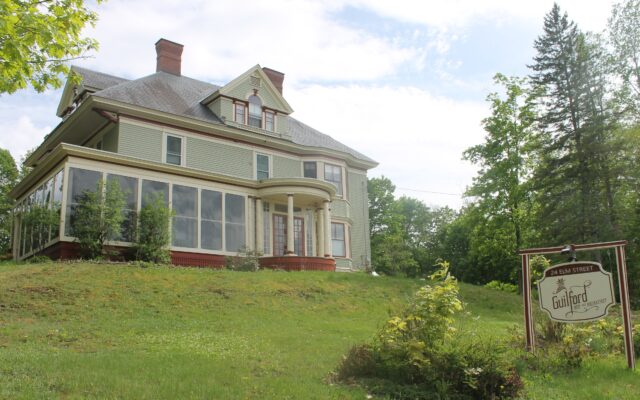
Maine is starting to decide which modern-era buildings have historic value
By Zara Norman, Bangor Daily News Staff
When the Moonspring Hermitage was added to the National Register of Historic Places, it represented a milestone for a list largely populated with much older homes.
The Zen Buddhist retreat, a building tied to the back-to-the-land movement of the 1970s, is the most modern one in Maine to be added to the federal list of sites and structures deemed worthy of preservation. Properties are generally not considered until 50 years after they are built.
Even now, the sites being added to the register are sites and older buildings, such as a 120-year-old bed and breakfast in Guilford that is on the market. The Hermitage’s inclusion signals that experts are beginning to consider which modern buildings can be termed “historic.”
It means that places are increasingly being included in the register for more than their architectural style. Instead, historians are looking at the role a building played in Maine’s social history, prominent movements and alternative ways of living. Mid-century homes including ranches and log cabins may soon be strong contenders for the designation as well.
“It’s part of that shift toward trying to be more inclusive,” said Michael Goebel-Bain, a coordinator with the Maine Historic Preservation Commission, which recommends properties for the register here. “[We’re] looking in different areas, like LGBTQ, African American, Asian American. Those are certainly areas that have been identified as underrepresented.”
The Hermitage, which was built in 1971 and is now a meditation retreat known as Morgan Bay Zendo, was added to the register because of the Japanese-influenced design of its buildings and gardens and the “significant trend toward alternative lifestyles during the post [World War II] years and particularly in the 1960s and 1970s,” the register’s description reads.
“It’s not an overtly super modern, contemporary looking building,” Michael Goebel-Bain said. “But it certainly is not a historic building either.”
Houses and architectural styles are added to the register depending on whether those property owners put them forward, making what makes the list a bit unpredictable. A recent example of the state’s diversity effort was last year’s addition of Malaga Island, a 42-acre island that was home to a mixed-race fishing community later forcibly removed by the state.
As buildings like the Hermitage begin to fall under the commission’s 50-year window for the register, the list will change dramatically, said Rob Anderson, an architecture professor at the University of Maine at Augusta.
The term “historic” will change as historians reach the 1970s, ‘80s and ‘90s, as the materials used and the proportions of homes built in those decades represent a departure from more traditional styles. Anderson predicts that log cabins, mid-century modern and ranch-style homes are some of the houses that may be added in the next few years.
There are a couple of buildings constructed in the late 1960s and early 1970s on the market in Maine now that could fall into that contemporary construction category, and be eligible for inclusion on the register if put forward.
Anderson thought a ranch in West Gardiner was a good example of what could qualify, though “ranch-style homes don’t typically get on the National Register,” he said. Built in 1968, this house has some colorful cedar siding and typifies the contemporary style popular at that time. Another potential entrant could be a log cabin in the Franklin County town of Avon.
“Log cabins were really kind of coming back in vogue in the 70s,” Anderson said. “People wanted to return back to nature, and so log cabins became very, very popular.”
Anderson sees a challenge for historians like Goebel-Bain in assessing whether these buildings from the 1970s are able to be listed on the register. While older architectural styles, like Greek or Gothic revival buildings, are prescriptive and need to include certain proportions and features in order to be listed, many homes built in the 1970s resist those classifications.
“We’re in the ‘see-as-you-go’ period,” he said. “It’s not as standardized as before.”